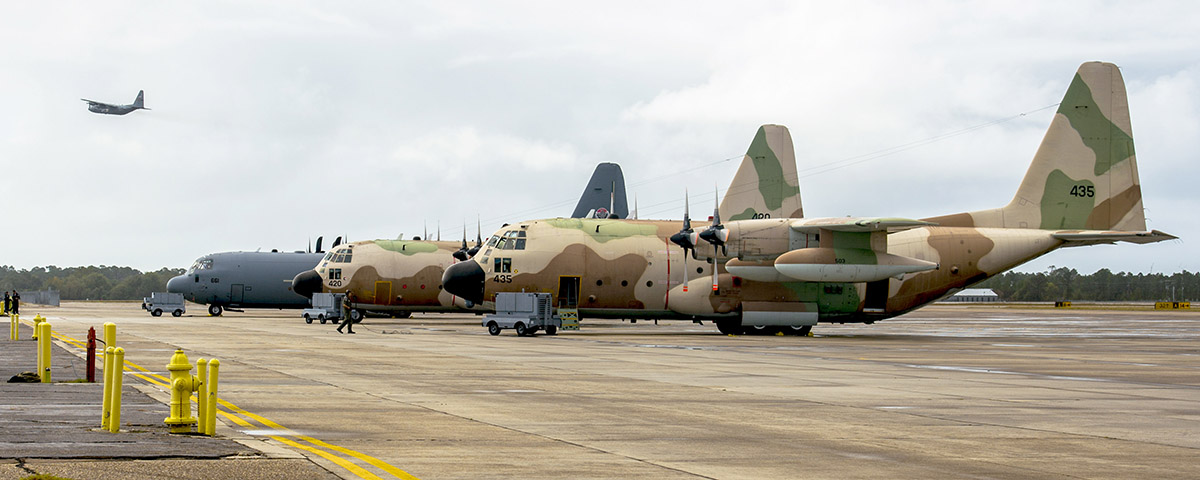The founding father of the IAF’s C-130 squadrons reveals the secret history of an innovative transport service.
Flying in one of the Israeli Air Force’s aging C-130s is no treat. The smell of exhaust permeates the cargo hold, which is already stuffy and claustrophobic given the lack of windows and the knee-to-knee seating arrangement, with long rows of facing canvas jump seats. Our bumpy, low-level flight makes me fear I’ll lose the breakfast I now regret eating. That would be especially embarrassing since I’m seated with retired Israeli Air Force Brigadier General Joshua “Shiki” Shani, an IAF icon who’s considered a founding father of the C-130 squadrons. Shani brought the first of Israel’s C-130s to the country in 1971 and flew them for the next 25 years, including as lead pilot in the famed Entebbe hostage rescue operation. Just finding him in the back of a Hercules is a rarity, since Shani has spent about half of his 13,000 flight hours in C-130 cockpits.
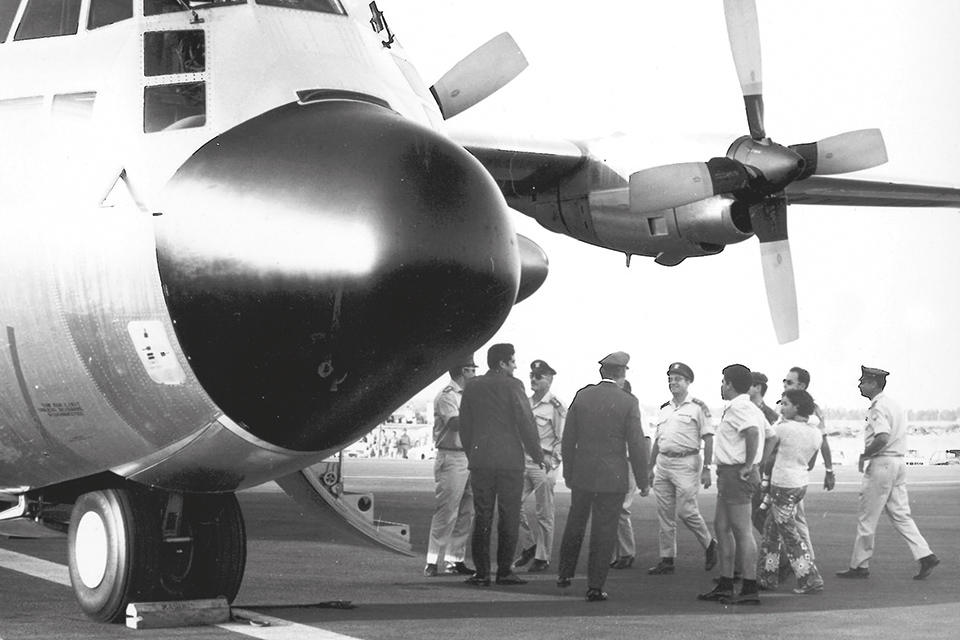
IAF transport squadrons have made a name for themselves over the years in a series of unconventional missions. They actually predate Israel’s celebrated fighter squadrons: During the struggling nation’s fight for independence, Air Service Air Transport Command (precursor to the IAF) transports hauled in desperately needed weapons, including crated Czech-made Messerschmitts, designated Avia S-199s— Israel’s first fighters.
Though the IAF is today very much a fighter force, Shani’s stories of the transport squadrons’ exploits reveal the service’s little-known history at the forefront—albeit mostly out of view—of countless operations, many of which have never been made public. “Use your imagination” is what the airlift guys usually say when asked about the tricks of their trade, with a circumspect smile. But at last Shani can reveal some of the secrets of Israel’s other air force.
In the lead-up to the June 1967 preemptive strike against Arab forces preparing for war against Israel, then-Lieutenant Shani—in his second year out of flight school—took part in a bogus reinforcement of the southern Israeli port city of Eilat. Israel’s war plans called for entering the Sinai Peninsula via the Gaza Strip, but an Egyptian division stood in its way. To deceive the Egyptians into thinking the Israeli response would come much farther south, Shani told me how some 10 IAF Nord Noratlases repeatedly flew to Eilat, then sat on the ground while a long line of trucks approached—simulating the process of unloading equipment and supplies. The transports then took off heading north, switched off their landing lights, and turned around and flew back to Eilat with their lights on, landing and repeating the drill of unloading ghost supplies. The Egyptians evidently fell for the ruse; given all the activity at Eilat, Egyptian military intelligence concluded that an Israeli thrust would come from that area, and the Egyptian forces were accordingly redeployed.
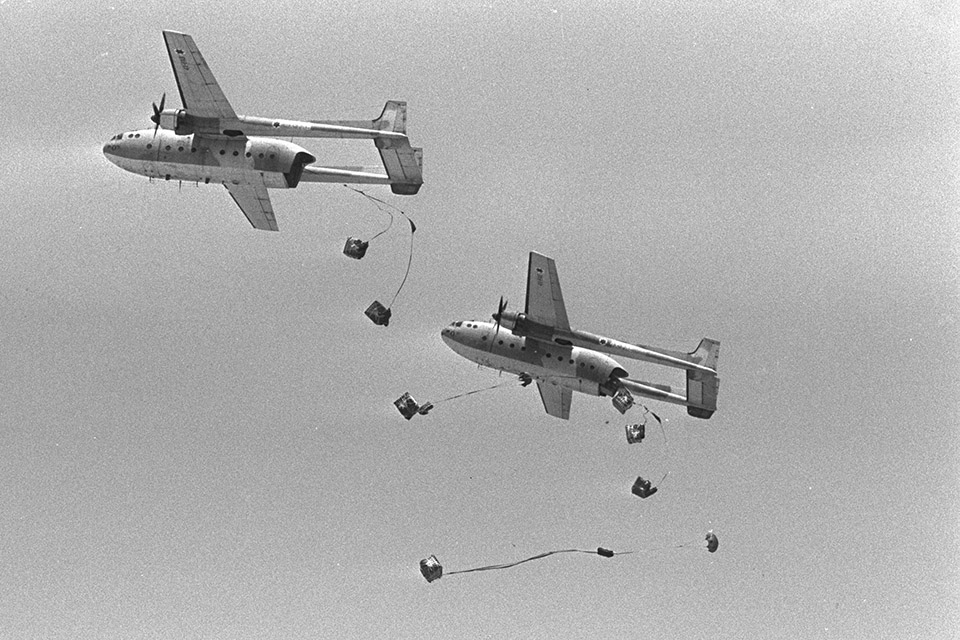
After its embarrassing defeat and loss of the entire Sinai Peninsula in the Six-Day War, Egypt was not prepared to allow Israel a moment of quiet along their new common border. This set in motion three years of frequent artillery exchanges, commando raids and dogfights known as the War of Attrition. When the U.S. pressured Israel not to use American-supplied Douglas A-4 Skyhawks in retaliatory strikes, Israel took an approach reminiscent of the American “daisy-cutter” missions in Vietnam and World War II’s skip-bomb Dambusters. In this case, airlift squadron transports were called to action as unconventional bombers.
The Israelis used huge 3-meter-long, five-ton improvised bombs to attack bridges over the Nile River. “We entered Egyptian airspace near the border with Sudan,” Shani recalled, “and flew along the Nile very low, to avoid radar detection.” At the calculated release point, each massive bomb was pushed out the back of the Noratlas (whose rear doors had been removed), hit the water with a large splash and floated in the current until a special fuze detonated the device under the targeted bridge. By that time, of course, the Israeli “bombers” were long gone, headed back to base. Shani concedes that the missions were not particularly successful: Some of the bridges were damaged, but none was destroyed. Unaware of what weapons were being used against them, the Egyptians deployed tethered balloons above the bridges, the same technique used to protect warships during WWII. That low-tech defense worked. After one of the Noratlases struck a balloon tether, lost an engine and could barely limp back to base, the improvised bomber missions were called off.
The operation that truly put the transport squadrons on the map was the legendary 1976 Entebbe rescue mission. Much has been written about that rescue, by Israeli commandos, of 102 Jewish and Israeli hostages held in Uganda by terrorists. It was in fact as much an air operation as a commando action.
Shani explained the challenges in leading the formation of four C-130s roughly 2,500 miles from Israel to Uganda. “We had to fly undetected,” he pointed out. “The main element was surprise. All it takes is one truck to block a runway, and that’s all. The operation would be over. Therefore, secrecy was critical.” Mission planners were also concerned that the Entebbe runway lights might be shut off, so troops on Shani’s aircraft—the first to land—laid out temporary lighting that proved critical, since the lights were indeed cut off as the third C-130 approached.
“After Entebbe,” Shani recalled, “the IAF recognized the C-130 as a full-fledged combat aircraft.” Their success at Entebbe also helped the transport squadrons move on after a 1975 accident in which a C-130 slammed into a mountain in the northern Sinai Desert during a nighttime training exercise, killing all 20 men on board.
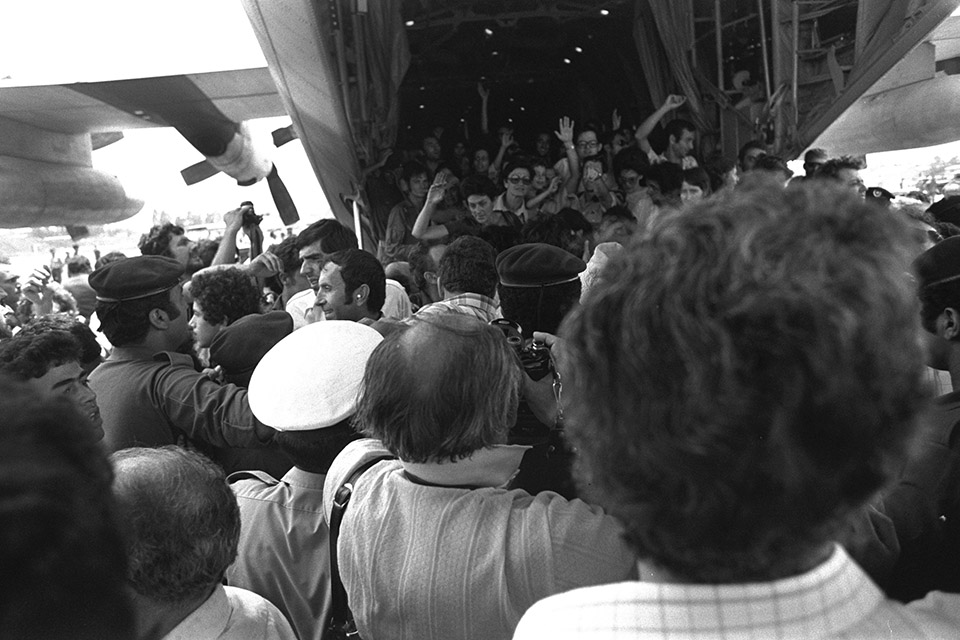
When Shani visited the U.S. in late 1976 to accept delivery of new C-130H models the IAF had ordered, he had the gumption to ask C-130 manufacturer Lockheed-Georgia’s president for a free airplane, reminding him of the great work the IAF had done to promote Lockheed with its Entebbe operation. “He wasn’t sure whether or not I was serious,” Shani recalled. “The next day he called for me, saying, ‘I’ve given some consideration to what you said,’” then presented the Israeli officer with a scale model Hercules.
Just three years later Shani found himself planning another rescue mission. After the fall of Shah Mohammad Reza Pahlavi of Iran during the February 1979 Islamic revolution, Israel’s relationship with Iran took a drastic turn for the worse, with the former allies transformed into bitter foes. When a contingent of 34 Israeli diplomats, foreign intelligence agents, Israel Defense Forces personnel and business people became trapped in Iran, Israeli Minister of Defense Ezer Weizman ordered plans drawn up for an air rescue operation.
“We came up with two options,” Shani said:“landing in a sports stadium, or alongside a highway east of Tehran. I rejected the stadium plan—it was too steep a descent, and not enough landing space. We would almost certainly crash. But the highway outside of Tehran, which cut through flat desert, was quite feasible.” The plan was simply to land next to the road, rendezvous with a truck carrying the Israelis and fly home. In the end the Israelis decided to rely on the U.S., which was then organizing an evacuation from Iran. (This was nine months before the U.S. embassy was seized). Although El Al Israel Airlines offices had been burned to the ground and the Israeli embassy ransacked and set afire by revolutionaries, the Israeli delegation was granted safe passage by secular elements of the new government, and flew out on February 18 on a Pan Am airliner to Frankfurt, Germany.
Shani piloted a flying communications relay station during a 1968 reprisal action against terrorists in Lebanon, and provided eyes in the sky for a special operation conducted the following year by Israel’s navy. More visible have been the IAF’s role in humanitarian operations, flying medical equipment and aid to Turkey, Greece, Armenia and Haiti, to name but a few countries, after devastating earthquakes; aiding refugees from Rwanda’s genocidal civil war and the Kosovo conflict; and coming to the aid of Americans in hurricane-struck New Orleans. And perhaps the best-known IAF airlift operations involved covertly transporting thousands of Ethiopian Jews to Israel: In Operations Moses, some 8,000 were airlifted from Sudan during a famine in 1984-85, and in Operation Solomon another 14,325 were rescued from politically destabilized Ethiopia in May 1991.
My favorite of Shani’s stories concerns preparations for Operation Opera, the 1981 destruction of Iraq’s Osirak nuclear reactor. He recounted flying over Saudi Arabia’s desert on a four-hour daytime refueling mission, supporting a pair of IAF McDonnell Douglas RF-4 Phantoms conducting photoreconnaissance of the reactor in preparation for the Israeli attack.“Our job was to fly over the desert waiting to refuel the Phantoms,” which were flying nap-of-the-earth to avoid detection. The refueling also had to be carried out at low level—so low that the Phantoms kicked up clouds of sand from the desert floor.
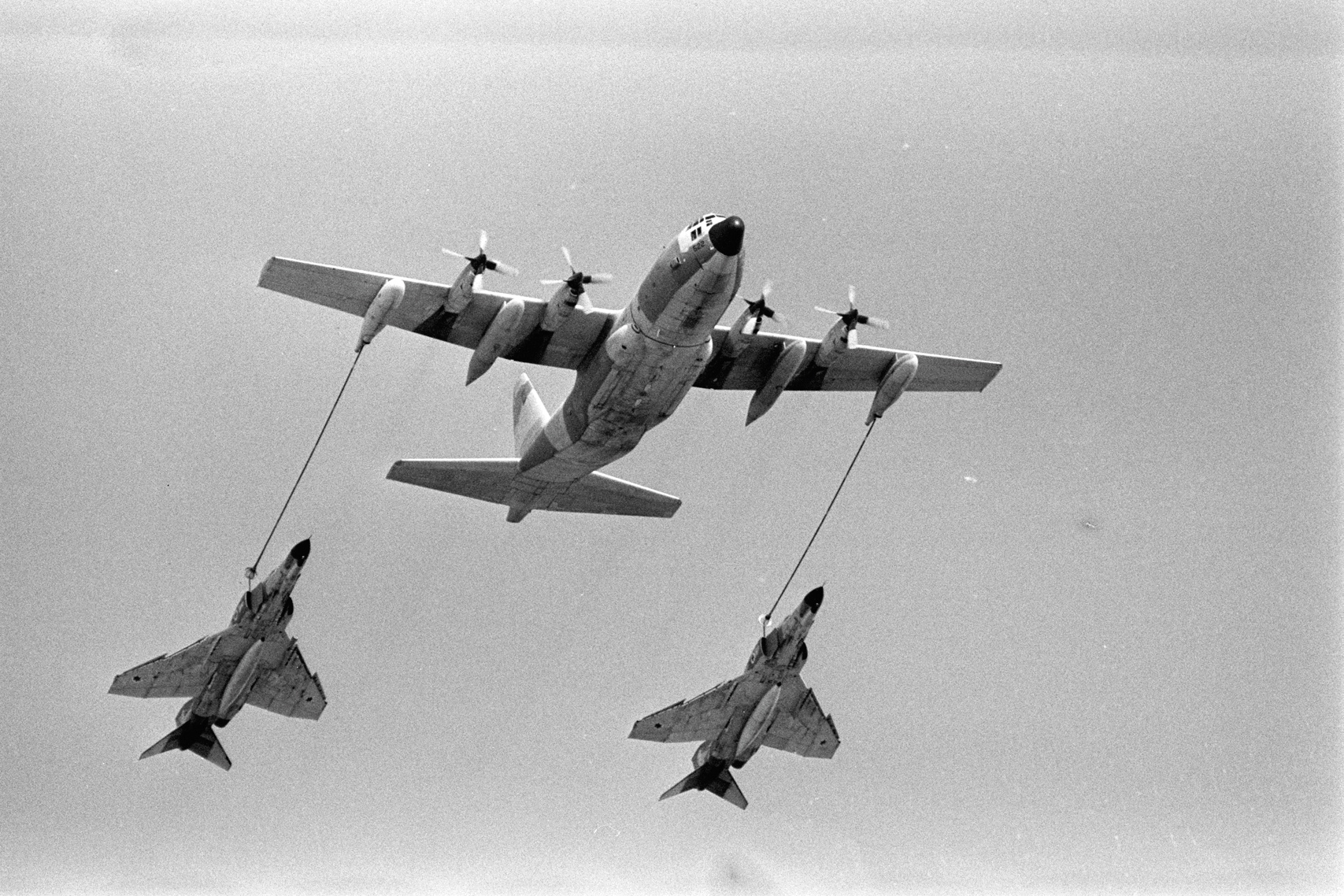
“It’s the middle of the day, and my aircraft is standing out like a sore thumb,” Shani said. At one point the Israeli command-and-control aircraft watching over his C-130 reported that a pair of Royal Saudi Air Force Northrop F-5E/Fs had been scrambled to intercept the Israelis, but calculated they were not a threat considering their range, which proved true.
“The following year,” Shani recalled, “while I was studying at the U.S. Air Force Air War College, an instructor called me over, saying: ‘Come here, Joshua. I want to tell you a story…’ and confided that he had been an F-5 instructor at Tabuk Air Force Base [in Saudi Arabia] at the time.” Shani learned that during the 1981 mission one of the F-5s had passed the “bingo” mark—the point after which the aircraft doesn’t have enough fuel to get back home. The pilot ejected, and his fighter crashed in the desert. The second F-5 made it back to base, but its pilot failed to lower his landing gear, destroying the aircraft. “As far as I was concerned,” joked Shani, “I deserved credit for two kills.”
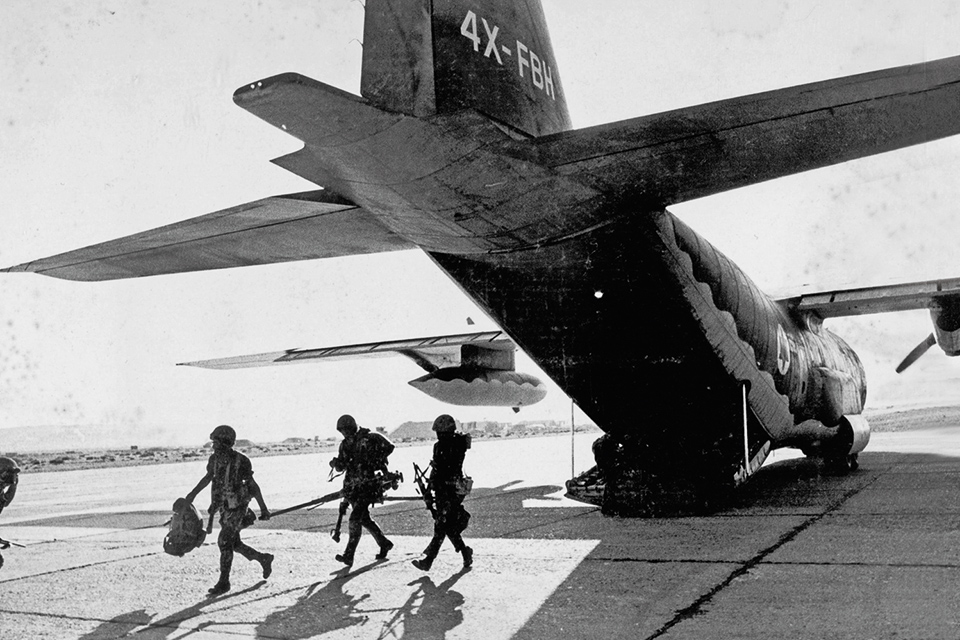
That refueling mission was not nearly as harrowing as another one a decade earlier, during the 1973 Yom Kippur War. When Israeli forces recovered from a surprise Egyptian attack and established a bridgehead across the Suez Canal to Egypt proper, Shani was flying resupply missions to forward operating bases. After landing a C-130 carrying a 20-ton load of fuel at captured Fayid airfield in Egypt, he was horrified to see an Egyptian fighter coming around for a strafing run. “I see a MiG turning toward me to line up a shot,”he recalled.“You’re helpless. That’s the end.” An IAF Israel Aircraft Industries Nesher fighter saved the day, downing the MiG. Ironically, Shani was by that time commander of the Boeing Stratocruiser squadron, yet he was flying a C-130 because he was one of the few Israeli pilots qualified on that type. The IAF then had a fleet of 12 C-130Es thanks to a gift from the U.S. during the desperate early days of the Yom Kippur War.
Today, 40 years later, Shani is vice president for Lockheed Martin in Israel, a position he has held for two decades. The IAF’s current recapitalization of its transport fleet has made it possible to procure the latest-generation Lockheed Martin C-130J models, a modernization effort that effectively closes the circle for Shani. His own piloting days are now behind him, but the specialized equipment with which the IAF’s C-130Js will now be outfitted—including chin-mounted FLIR (forward-looking infrared), satellite communication, secure radio, and electronic warfare and defensive suites—suggests Israel’s airlift squadrons will continue to build on their proud legacy of secret, unconventional operations in the 21st century.
Gary Rashba, who works for Lockheed Martin in Israel, is the author of Holy Wars: 3,000 Years of Battles in the Holy Land. Further reading: Israel’s Best Defense: The First Full Story of the Israeli Air Force, by Eliezer “Cheetah” Cohen; and No Margin for Error: The Making of the Israeli Air Force, by Ehud Yonay.
Originally published in the January 2013 issue of Aviation History. To subscribe, click here.

